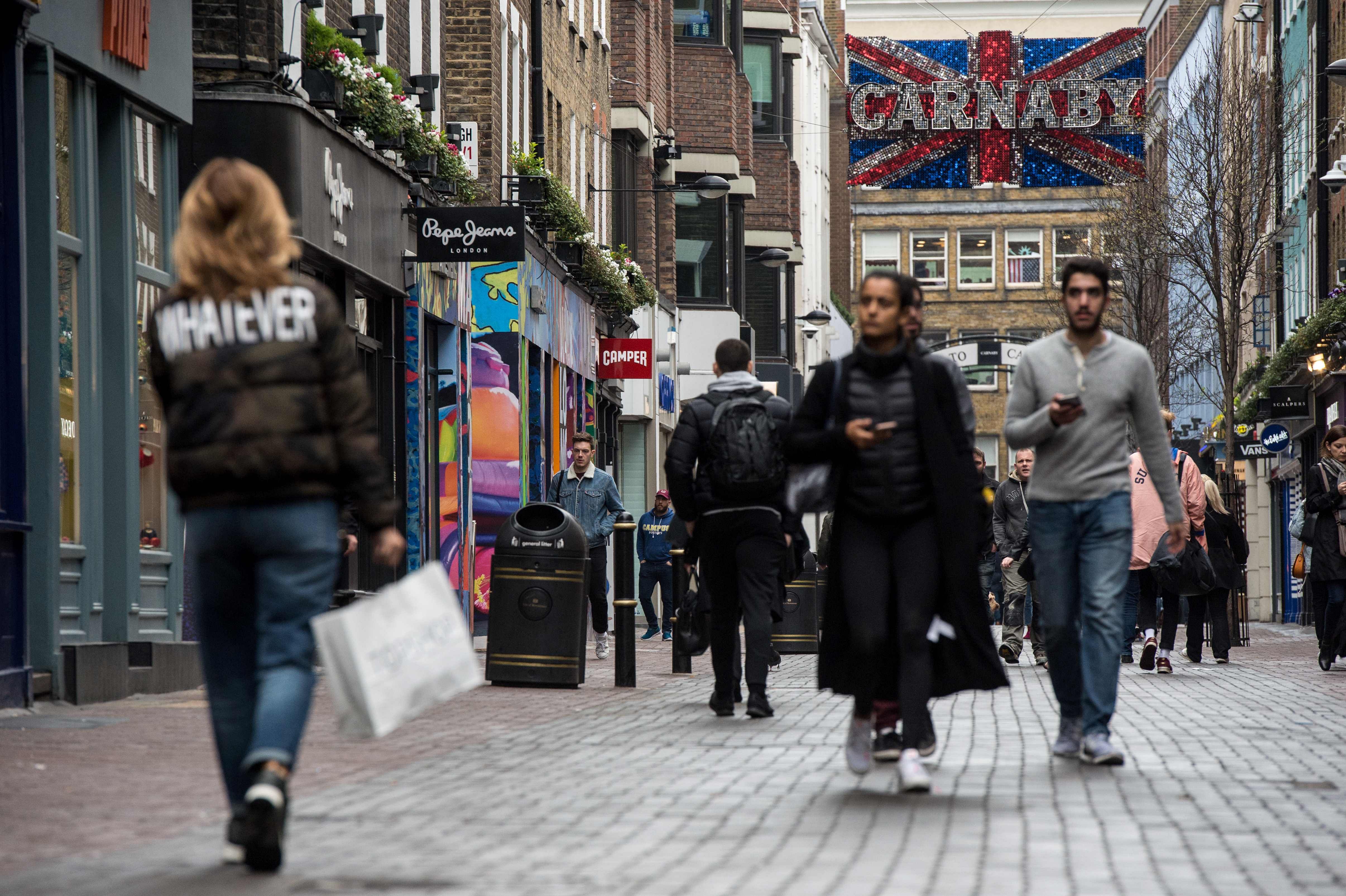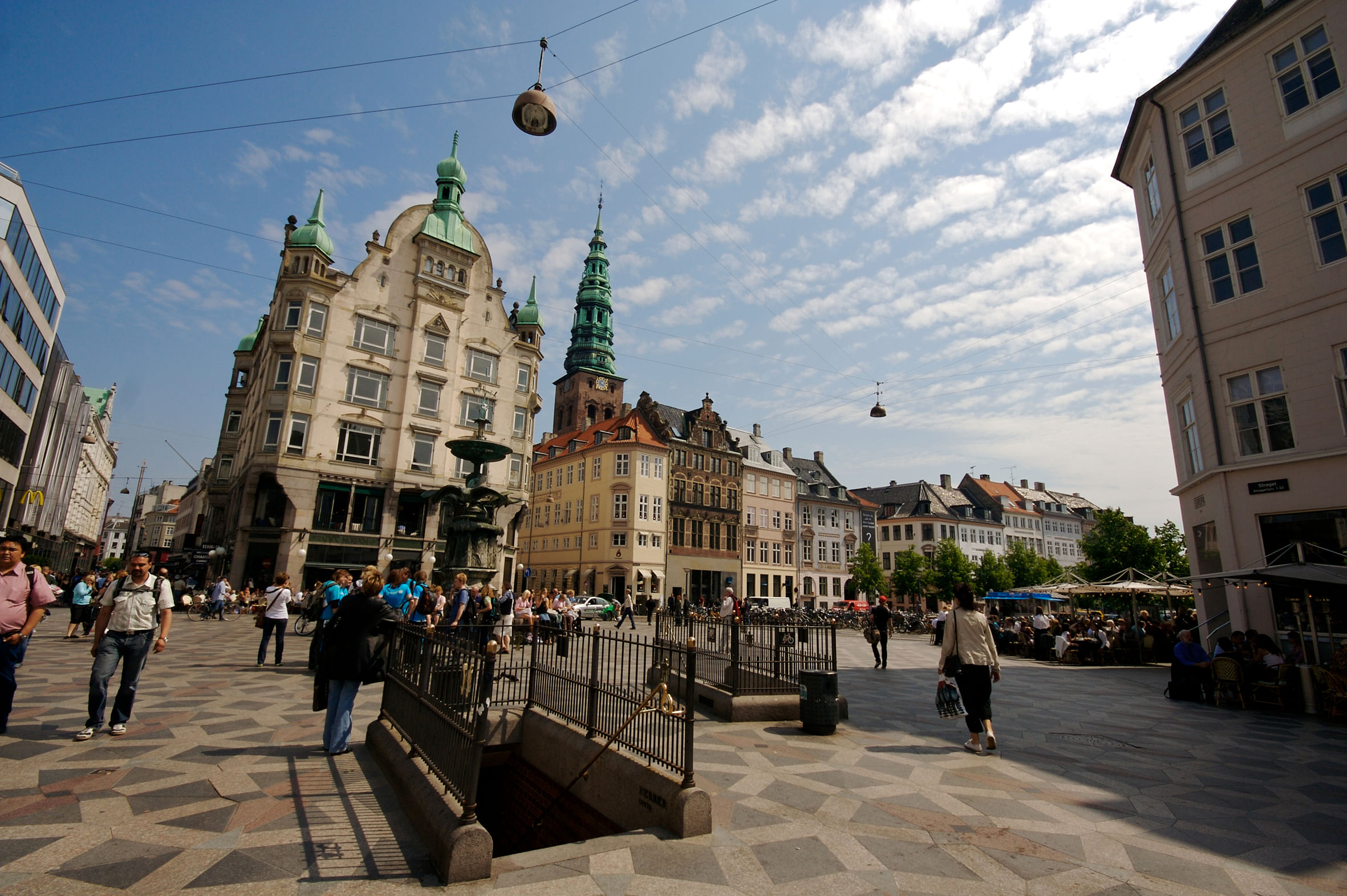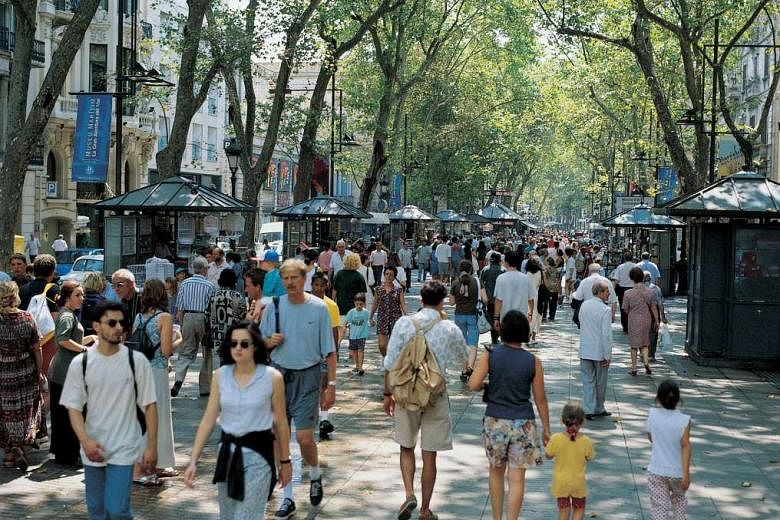SINGAPORE - Orchard Road could become fully pedestrianised in the future as part of plans to form the precinct, Minister for Trade and Industry (Industry) S. Iswaran said at a tourism industry conference on Thursday (April 13).
For now, government agencies such as the Urban Redevelopment Authority and the Land Transport Authority are working with the private sector to consider a road reduction programme and to open up existing parcels of State land on Orchard Road to expand the pedestrian mall.
Here are 10 other pedestrian malls, where roads have been turned into walking streets for shoppers, around the world.
1. Beijing's Qianmen Street, walkway for emperors

Qianmen Street, which runs for about 840m south from the historic Tiananmen square, is one of the oldest pedestrian malls in China.
Built during the Ming and Qing Dynasties (1368-1911), the street was formerly a royal road for the feet of emperors and later lined with houses for those taking the imperial examinations.
Today, Qianmen Street has been divided into four zones for culture, food, shopping and entertainment.
It links pedestrians to some 50 courtyards and hutongs - narrow alleyways - that are heritage sites and decades-old shops that sell sauces, Chinese medicine, silk and tea.
The street is heavily frequented by tourists, earning largely "excellent" and "very good" reviews on travel site TripAdvisor.
2. Tokyo's Cat Street - which does not sell cats
Nestled in Shibuya and Harajaku, Cat Street runs for about 1km, with chic fashion stores, accessory shops, and little restaurants tucked away in pockets.
While there are no real cats for sale at Cat Street, the lane is said to be named after the many stray cats that used to be found there.
Other urban myths say that the street is so named as it is as narrow as a cat's forehead, or that there are unusually many black cats there.
The pedestrian mall is also named Ura-Harajuku, or behind Harajuku. The back lane, which was set up since 1964, features many unique Japanese boutiques, cafes and bars.
It is popular with tourists even now, and is ranked number eight out of 190 things to do in Shibuya on TripAdvisor.
3. Brisbane's Queen Street Mall

Located in the heart of Australia's Brisbane city, Queen Street Mall is one of the most popular pedestrian malls in the land down under, with more than 26 million visitors a year visiting the over 700 stalls there.
Other than local and international labels, the pedestrian mall hosts heritage-listed arcades - covered walks with shops along one or both sides - a farmers' market, as well as buskers and lifestyle events.
The mall also houses a cinema and casino, as well as salons, spas, restaurants and bars.
Queen Street became a pedestrian mall in 1982 to coincide with the Commonwealth Games, and has gone through several rounds of reinvention, including additions and extensions such as the 2009 Burnett Lane integration.
4. London's Carnaby Street, birthplace of Swinging London

Carnaby Street, in Soho in central London's City of Westminster, is a historic street with its roots in the 1600s.
It got popular in the 1960s with the followers of the mod and hippie styles, fashion movements that bloomed in the time, and was pedestrianised in 1973.
Music stars including The Beatles, The Rolling Stones and Jimi Hendrix were all regulars at the hip street.
Known then for independent fashion boutiques, Carnaby Street today features more than 100 shops and 60 eateries, and even comes with a free walking tour app.
While visitors still stream to Carnaby Street, some have said that the street is no longer quite like how it originally used to be, a centre of what is alternative, funky and edgy.
5. Israel's Ben Yehuda Street, where live music plays daily

Named after the founder of the Modern Hebrew language, Eliezer Ben-Yehuda, Ben Yehuda Street is a main street in downtown Jerusalem. It was closed to automobile traffic in 1983 and is lined with shops and sidewalk cafes.
Street musicians set up their stalls there and perform tricks for change thrown into open guitar cases or hats. A tram goes by periodically near the street.
However, behind the buzz of tourists and performers, the street holds a darker past - it has been targeted by suicide bombers several times - including an attack in 2001 where 13 people were killed.
Nevertheless, it is frequently listed among the top things to do in Jerusalem.
6. Third Street Promenade (Los Angeles)
The Third Street Promenade is said to be one of the few successful pedestrian malls in the United States. Located in the coastal city of Santa Monica in California, downtown Los Angeles, the mall has been revamped several times to continue to draw customers.
Its pedestrianisation dates back to the 1960s, when three blocks of Third Street were turned into a pedestrian mall.
What began as a hive of local businesses has now turned into a home for chain stores such as Gap, Forever 21 and Abercrombie and Fitch, though.
Street performers flank the street, and buskers and artists line the 65m-long mall.
The Promenade has been criticised for losing its identity and for catering only to tourists, with its homogenised stores and restaurants.
7. Brazil's Flower Street
Brazil's Flower Street, or Rua das Flores, is one of the first major pedestrian streets in the country.
Set up from 1972, the street in downtown Curitiba is dotted with flower pots and street performers such as mimes and clowns.
Visitors there have reviewed the street as a "piece of Europe lost in South America", and as a historical walkway in the heart of the city with fine restaurants and coffee places.
However, it is also common to see homeless people begging there, and the street has also been criticised as "over-hyped".
8. Barcelona's boulevard of busking dreamers: La Rambla

Spain's Barcelona province is home to the La Rambla, also known as Las Ramblas, a tree-lined pedestrian mall.
The 1.2km-long mall is said to be a window into Catalan culture, with cultural centres, theatres and fascinating architecture.
The ever-changing street scene was named after a stream that once ran there.
Visitors can find pavement artists, living statues and modern multimedia installations among the many stalls set on the narrow lanes.
The street is not without its problems - pickpockets are common and sex workers reportedly ply their trade at its southern end.
9. Milan's Via Dante, home of beautiful old dames
Via Dante is an elegant, artsy street in Italy's central Milan, where visitors can admire historic architecture and step into theatres or high-end fashion boutiques.
Named after a Florentine poet, Dante Alighieri, Via Dante is a confluence of ancient buildings, and became fully pedestrianised in 1996.
Many of the buildings there were constructed in the late 19th century. Of note is the Palazzo Carmagnola, which was built in 1400. Its porticos and marble capitals from the 16th century have been preserved.
10. Stroget (Copenhagen, Denmark)

Denmark's Stroget, a pedestrian mall in the heart of Copenhagen, is said to be one of the longest and oldest pedestrian shopping streets. Parts of the street were pedestrianised from as early as 1962.
The 1.1km-long street is Copenhagen's main artery road, and is well-stocked with luxury brands such as Prada, Gucci and Louis Vuitton.
It also features high-street brands such as H&M and Zara. Visitors can also find Danish design shops, gourmet cake stores and high-quality chocolatiers there.
Stroget is also filled with sidewalk cafes, art galleries and museums, and those who meander along its side streets will find smaller shops and street entertainers.
SOURCES: Carnaby.co.uk, Copenhagenet.dk, ebeijing.gov.cn, Lonelyplanet.com, Matcha-jp.com, Restreets.org, TripAdvisor.com, Turismo.milano.it, VirtualJapan.com, VisitBrisbane.com.au, Visitcopenhagen.com,

